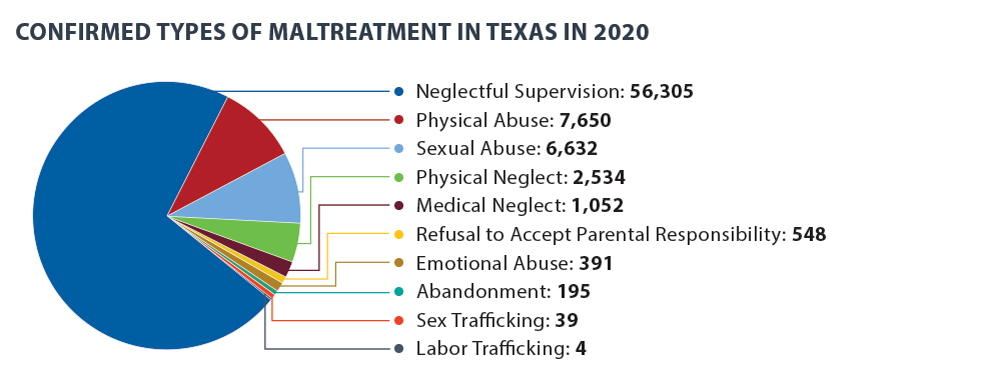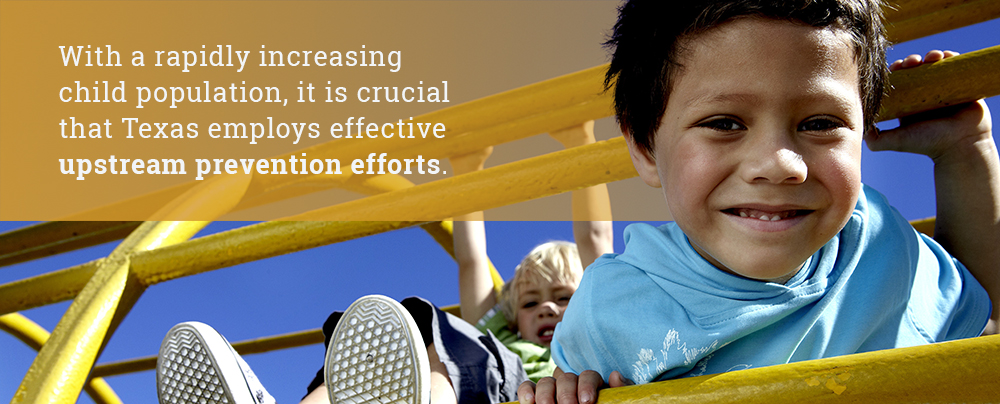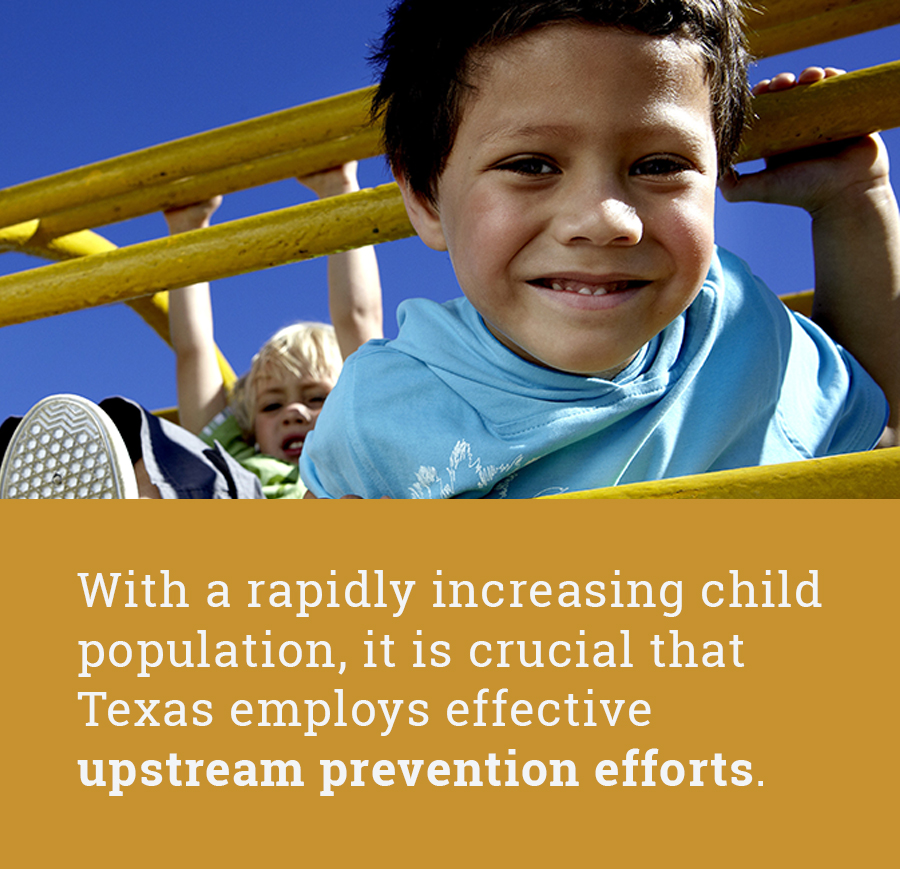The Scope of the Problem
Child maltreatment is a significant public health problem in the United States and around the world. By utilizing a comprehensive public-health approach in the upstream prevention of child abuse and neglect, PEI fosters a collective sense of responsibility in all Texans for ensuring the safety and well-being of the more than 7 million children residing in our state.
In 2020 over 68,000 children were confirmed victims of child maltreatment in Texas; this represents an almost 2 percent increase from the previous year. Of these children, almost 50 percent (34,276 children) were under the age of 5. With over 56,000 substiantiated occurrences of neglectful supervision, this continues to be the most prevalent form of maltreatment experienced by Texas children.
Out of the 154,593 cases of child abuse and neglect DFPS investigated, slightly over 20,000 cases were opened for family preservation services and approximately 8,000 cases were closed with children being removed from their families and placed in substitute care. Comparatively, in Fiscal Year 2019 roughly 18,000 cases were opened for family preservation services and almost 8,900 cases resulted in children being placed in substitute care.
These numbers underscore a critical need for prevention efforts upstream to support children and families and preserve the parent-child bond by keeping families together when possible.


